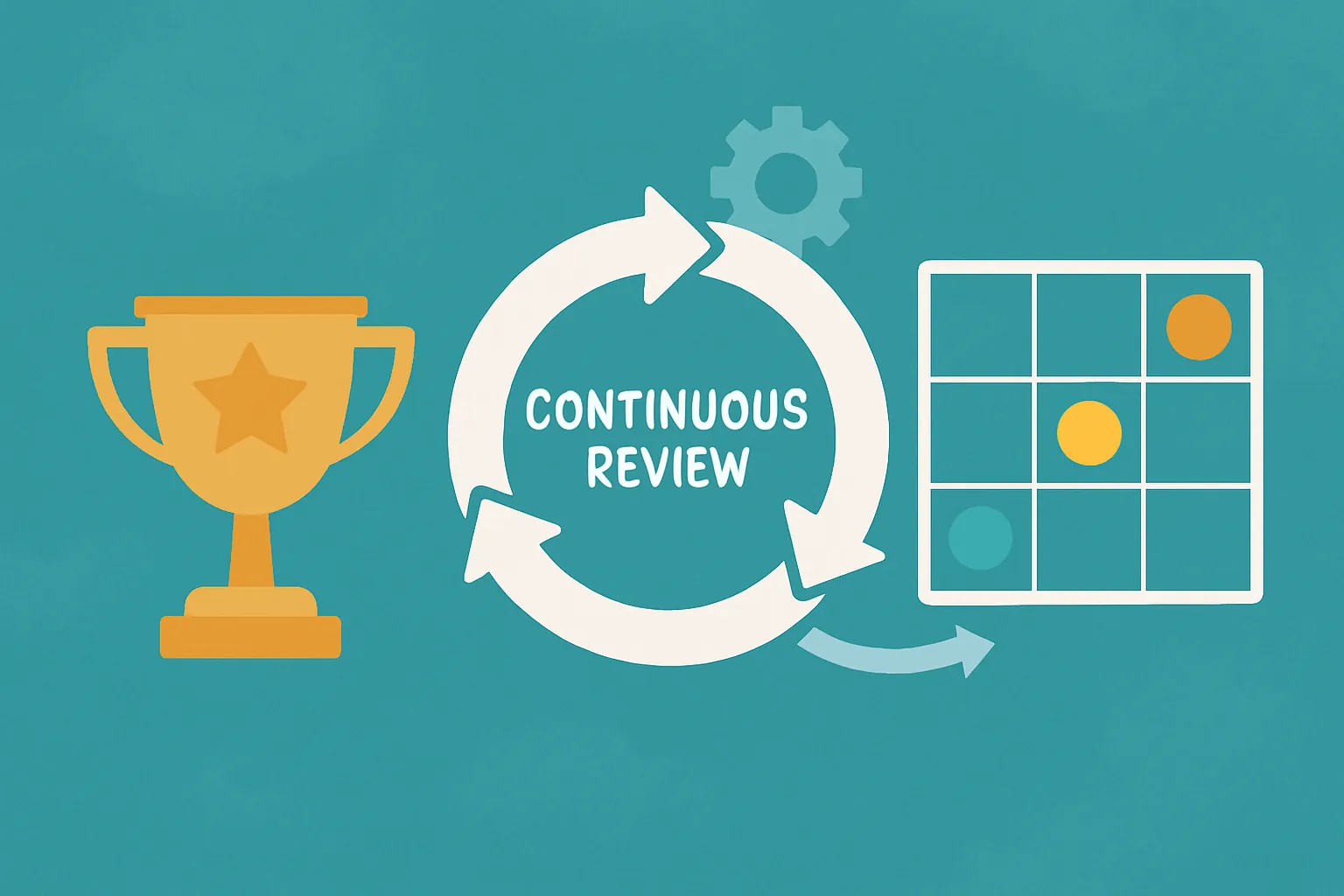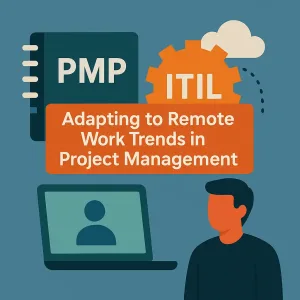Introduction
Portfolio prioritization serves as a critical framework for ensuring that an organization’s projects align with its strategic objectives. This process involves evaluating and selecting the most valuable projects to pursue, thereby optimizing resource allocation and enhancing overall project success rates. By systematically categorizing projects based on various criteria such as risk, return, and complexity, project managers can make informed decisions that drive organizational growth and efficiency [2][7].
The dynamic nature of project environments necessitates a continuous review of project portfolios. As market conditions, organizational goals, and resource availability evolve, the relevance of ongoing projects can shift dramatically. This fluidity underscores the importance of regularly reassessing project priorities to ensure that they remain aligned with the organization’s strategic direction. Without this ongoing evaluation, projects may become misaligned with business goals, leading to wasted resources and missed opportunities [1][8].
The main thesis of this discussion is that ongoing evaluation is essential for maintaining project relevance. By implementing a robust process for continuous review, project managers and program directors can adapt to changes in the project landscape, ensuring that their portfolios remain aligned with the organization’s strategic objectives. This proactive approach not only enhances project viability but also fosters a culture of agility and responsiveness within the organization, ultimately contributing to long-term success [5][12].
Understanding Portfolio Prioritization
Portfolio prioritization is a critical aspect of project management that ensures organizations effectively align their projects with strategic objectives, allocate resources efficiently, and manage risks effectively. This process is not merely a one-time task but requires continuous evaluation to maintain the relevance and success of projects within a portfolio.
Goals of Portfolio Prioritization
- Alignment with Strategic Objectives: The primary goal of portfolio prioritization is to ensure that all projects contribute to the organization’s long-term strategic goals. By aligning projects with these objectives, organizations can focus their efforts on initiatives that drive value and support their mission [5][7].
- Resource Allocation: Effective prioritization allows project managers to allocate resources—such as time, budget, and personnel—where they are most needed. This ensures that high-priority projects receive the necessary support to succeed while minimizing waste on less critical initiatives [2][6].
- Risk Management: Prioritization also plays a vital role in managing risks associated with projects. By evaluating the potential risks and returns of each project, organizations can make informed decisions that mitigate risks while maximizing potential benefits [2][8].
Traditional Methods of Prioritization
Project managers often rely on traditional methods for prioritizing projects, which include:
- Scoring Models: These models assign numerical values to various criteria, allowing project managers to evaluate and compare projects quantitatively. This method helps in making objective decisions based on predefined metrics [9][15].
- Cost-Benefit Analysis: This approach involves comparing the expected costs of a project against its anticipated benefits. It helps organizations determine whether a project is worth pursuing based on its financial viability [2][12].
While these methods provide a structured approach to prioritization, they can also have limitations.
Limitations of Static Prioritization Approaches
Static prioritization methods, while useful, often fail to account for the dynamic nature of project environments. Some key limitations include:
- Inflexibility: Once projects are prioritized, static models may not adapt well to changes in the business environment, market conditions, or organizational strategy. This can lead to misalignment over time, as projects that were once relevant may no longer serve the organization’s goals [12].
- Lack of Continuous Evaluation: Traditional methods typically involve a one-time assessment, which can overlook the need for ongoing evaluation. As projects progress, their relevance and alignment with strategic objectives may shift, necessitating a reevaluation of priorities [1][4].
- Overemphasis on Quantitative Metrics: While scoring models and cost-benefit analyses provide valuable data, they may not capture qualitative factors that influence project success, such as team dynamics, stakeholder engagement, and organizational culture [9][15].
The Need for Continuous Review
The process of portfolio prioritization is not a one-time event but a dynamic and ongoing necessity. Continuous review is essential for ensuring that projects remain relevant and aligned with the ever-evolving strategic goals of an organization. Here are several key points that highlight the importance of this ongoing assessment:
Changing Project Conditions
Project conditions are subject to constant change due to various factors, including:
- Market Shifts: Economic fluctuations, emerging technologies, and changing consumer preferences can significantly impact project viability. For instance, a project that was once aligned with market demands may become irrelevant if those demands shift unexpectedly.
- Resource Availability: The availability of resources, including personnel, budget, and technology, can change over time. A project that initially had ample resources may face constraints later, necessitating a reevaluation of its priority within the portfolio.
- Stakeholder Needs: As stakeholder expectations evolve, projects must adapt to meet these new requirements. Continuous review allows project managers to stay attuned to stakeholder feedback and adjust priorities accordingly.
Risks of Ignoring Continuous Review
Failing to implement a continuous review process can lead to several detrimental outcomes:
- Project Obsolescence: Without regular assessments, projects may become outdated or irrelevant, leading to wasted effort and resources. Projects that do not align with current market conditions or organizational goals can drain resources that could be better utilized elsewhere.
- Wasted Resources: Investing time and money into projects that no longer serve strategic objectives can result in significant resource waste. Continuous review helps identify projects that should be deprioritized or terminated, allowing for a more efficient allocation of resources.
- Misalignment with Strategic Goals: As organizational strategies evolve, projects must be reassessed to ensure they continue to support these goals. Ignoring this alignment can lead to a portfolio that does not effectively contribute to the organization’s success, ultimately hindering overall performance.
Successful Outcomes from Continuous Review
Numerous industries have recognized the value of continuous review in portfolio prioritization, leading to successful project outcomes:
- Technology Sector: Companies like Microsoft and Google frequently reassess their project portfolios to adapt to rapid technological advancements and changing consumer needs. This ongoing evaluation allows them to pivot quickly and invest in projects that align with current market trends.
- Healthcare: In the healthcare industry, continuous review is critical for adapting to new regulations, emerging health threats, and changing patient needs. Organizations that regularly evaluate their project portfolios can prioritize initiatives that enhance patient care and operational efficiency.
- Construction: In construction, project conditions can change due to regulatory shifts, environmental factors, or resource availability. Firms that engage in continuous review can adjust their project priorities to mitigate risks and capitalize on new opportunities, ensuring successful project delivery.
Best Practices for Continuous Review in Portfolio Prioritization
Continuous review in portfolio prioritization is essential for ensuring that projects remain aligned with organizational goals and adapt to changing business environments. Here are some actionable strategies for implementing effective continuous review practices in project management:
- Establish a Regular Review Cycle: Implementing a structured review cycle, such as quarterly or biannual assessments, allows project managers to consistently evaluate the performance and relevance of projects within the portfolio. This regularity helps in identifying projects that may need to be deprioritized or adjusted based on current business needs and market conditions [1].
- Create Cross-Functional Teams: Forming cross-functional teams for evaluations can provide diverse perspectives and insights. By involving members from different departments, organizations can ensure that various aspects of project performance are considered, leading to more informed decision-making. This collaborative approach can enhance the quality of the prioritization process and foster a culture of shared ownership [2].
- Utilize Data Analytics and Project Management Tools: Leveraging data analytics and advanced project management tools is crucial for tracking project performance and outcomes. These tools can provide real-time data, enabling project managers to make informed decisions based on quantitative metrics. Continuous monitoring of key performance indicators (KPIs) allows for timely adjustments to the portfolio, ensuring that resources are allocated effectively [3][4].
- Encourage Stakeholder Feedback: Actively seeking feedback from stakeholders is vital for maintaining alignment with business objectives. Regularly engaging with stakeholders helps to gather insights on project relevance and performance, ensuring that the portfolio reflects the current strategic direction of the organization. This feedback loop can also enhance stakeholder buy-in and support for ongoing projects [5].
By implementing these best practices, project managers and program directors can create a robust framework for continuous review in portfolio prioritization, ultimately leading to improved project outcomes and organizational success.
Case Studies: Successful Continuous Review in Action
Continuous review in portfolio prioritization is essential for ensuring that projects remain aligned with organizational goals and adapt to changing circumstances. This section will explore a case study of a company that effectively implemented continuous review processes, analyzing the strategies they employed and the resulting impact on project outcomes.
Case Study: A Leading Technology Firm
A prominent technology firm recognized the need for a robust portfolio management strategy to navigate the fast-paced nature of the industry. They implemented a continuous review process that involved regular assessments of project performance and alignment with strategic objectives.
Strategies Used:
- Establishment of Review Gates: The firm introduced review gates at various stages of project development. These gates served as checkpoints to evaluate project progress, resource allocation, and alignment with corporate strategy. This approach ensured that only projects meeting predefined criteria continued to receive funding and resources [1].
- Data-Driven Decision Making: The company leveraged data analytics to monitor project performance continuously. By analyzing key performance indicators (KPIs) and project metrics, they could make informed decisions about which projects to prioritize or deprioritize based on real-time data [2].
- Stakeholder Engagement: Regular engagement with stakeholders was a cornerstone of their continuous review process. The firm established feedback loops that allowed project teams to present updates and receive input from senior management and other stakeholders, fostering a culture of collaboration and transparency [3].
Impact on Project Outcomes:
The implementation of continuous review led to significant improvements in project outcomes:
- Increased Project Success Rates: By regularly evaluating projects against strategic goals, the firm was able to terminate underperforming projects early, reallocating resources to more promising initiatives. This resulted in a higher overall success rate for projects within the portfolio [4].
- Enhanced Agility: The continuous review process allowed the firm to respond swiftly to market changes and emerging opportunities. This agility enabled them to pivot resources and focus on projects that aligned with evolving business needs, ultimately driving innovation and competitive advantage [5].
- Improved Resource Utilization: With a clear understanding of project priorities, the firm optimized resource allocation, ensuring that high-priority projects received the necessary support while minimizing waste on less critical initiatives [6].
Lessons Learned and Takeaways:
- Regular Checkpoints are Essential: Establishing review gates and regular assessment intervals is crucial for maintaining project relevance and alignment with strategic objectives.
- Data is Key: Utilizing data analytics to inform decision-making can significantly enhance the effectiveness of portfolio prioritization efforts.
- Engagement Drives Success: Involving stakeholders in the review process fosters collaboration and ensures that diverse perspectives are considered, leading to more informed decisions.
- Adaptability is Vital: The ability to pivot and reallocate resources based on continuous evaluation is essential for maintaining a competitive edge in a rapidly changing environment.
By adopting a continuous review approach, project managers and program directors can enhance their portfolio management practices, ensuring that their projects remain relevant and aligned with organizational goals. This case study illustrates the tangible benefits of such a strategy, providing valuable insights for those looking to improve their project prioritization processes.
References:
1. [1] Review gates align project funding with corporate strategy.
2. [2] Data-driven decision-making enhances project evaluation.
3. [3] Stakeholder engagement fosters collaboration and transparency.
4. [4] Early termination of underperforming projects increases success rates.
5. [5] Agility in project management drives innovation.
6. [6] Optimized resource allocation improves project outcomes.
Challenges and Considerations
Maintaining the relevance of projects through continuous review is essential. However, implementing a continuous evaluation process can present several challenges that project managers and program directors must navigate. Below are some common obstacles along with strategies to overcome them, as well as the critical role of organizational culture in fostering continuous improvement.
Common Challenges
- Resistance to Change: Employees and stakeholders often resist new processes, especially if they are accustomed to traditional project management methods. This resistance can stem from fear of the unknown or a belief that the current system is sufficient [4].
- Resource Constraints: Continuous review requires time, personnel, and financial resources. Organizations may struggle to allocate these resources effectively, particularly if they are already stretched thin with existing projects [1].
- Data Management Issues: The lack of reliable project data can complicate the prioritization process. Inconsistent or sparse data can lead to biases in decision-making, such as optimism bias or personal stakes influencing project evaluations [15]. This makes it difficult to assess project performance accurately and prioritize effectively.
Strategies to Overcome Challenges
- Foster a Change-Ready Culture: To combat resistance, it is crucial to cultivate an organizational culture that embraces change. This can be achieved through training sessions, workshops, and open communication about the benefits of continuous review processes. Engaging employees in the decision-making process can also help alleviate fears and build buy-in [4].
- Implement Incremental Changes: Instead of a complete overhaul of existing processes, consider implementing incremental changes. This approach allows teams to adapt gradually, reducing the shock of change and making it easier to allocate resources effectively [4].
- Enhance Data Management Practices: Invest in robust data management systems that ensure reliable and consistent project data. Regular audits and updates to data collection methods can help mitigate biases and improve the accuracy of project evaluations [15].
The Role of Organizational Culture
The success of a continuous review process is heavily influenced by the organizational culture. A culture that values transparency, collaboration, and continuous improvement will support the ongoing evaluation of projects. Leaders should encourage feedback and create an environment where team members feel comfortable sharing insights and suggestions for improvement. This not only enhances project relevance but also fosters a sense of ownership among team members, leading to better project outcomes [6].
Conclusion
In project management, the significance of continuous review in portfolio prioritization cannot be overstated. Ongoing evaluation is essential for ensuring that projects remain aligned with strategic goals and deliver maximum value to the organization. By regularly assessing the relevance and performance of projects, managers can make informed decisions that optimize resource allocation and enhance overall project outcomes. This practice not only helps in identifying projects that may no longer align with corporate objectives but also allows for the timely adjustment of priorities in response to changing business environments and stakeholder needs.
Project managers and program directors are encouraged to adopt continuous review practices as a fundamental aspect of their portfolio management strategy. Implementing regular evaluations fosters a culture of agility and responsiveness, enabling teams to pivot when necessary and focus on initiatives that drive the most significant impact. By embracing this proactive approach, organizations can better navigate the complexities of project management and ensure that they are not only doing things right but also doing the right things.
Find out more about Shaun Stoltz https://www.shaunstoltz.com/about/.
This post was written by an AI and reviewed/edited by a human.



